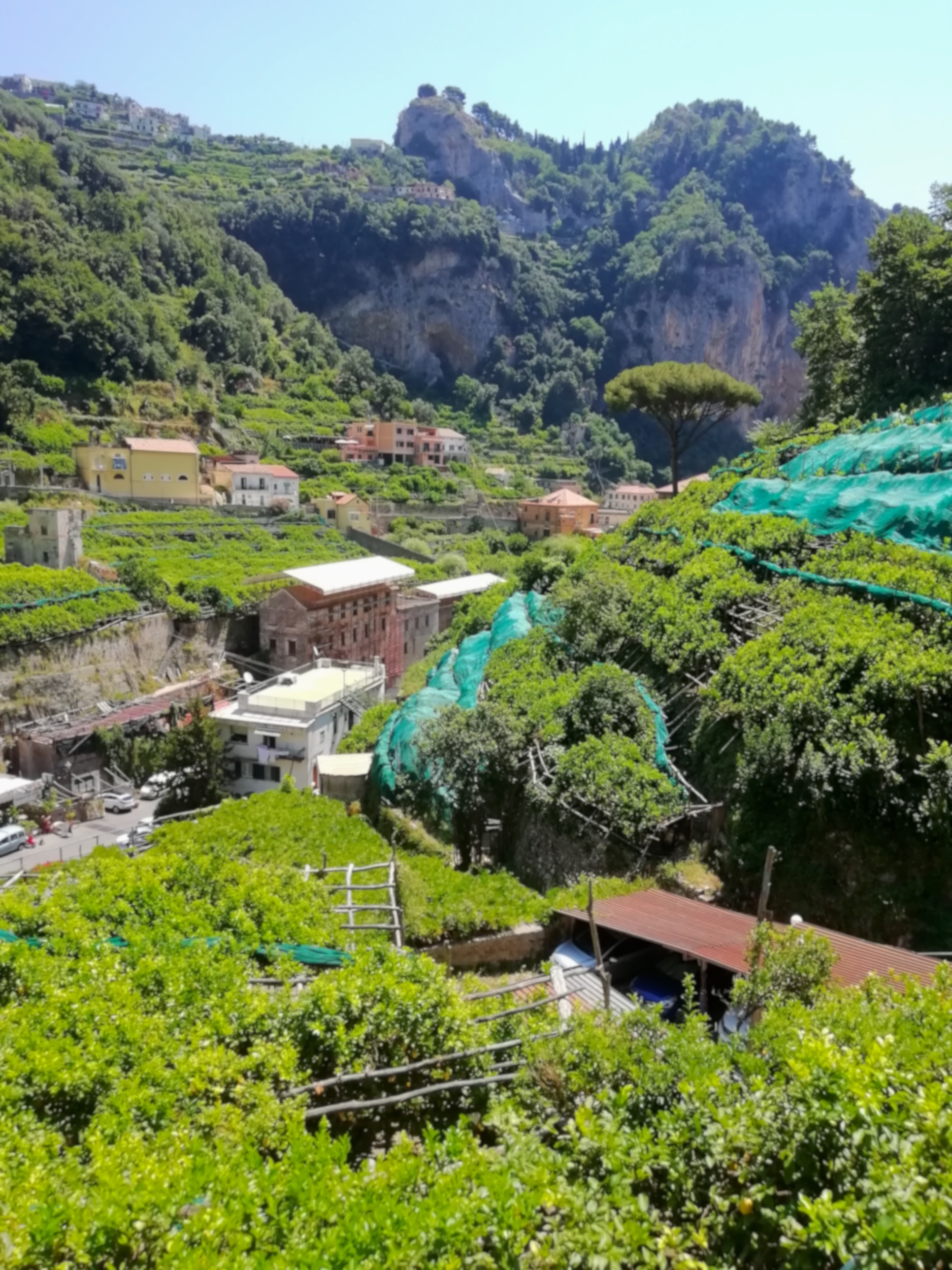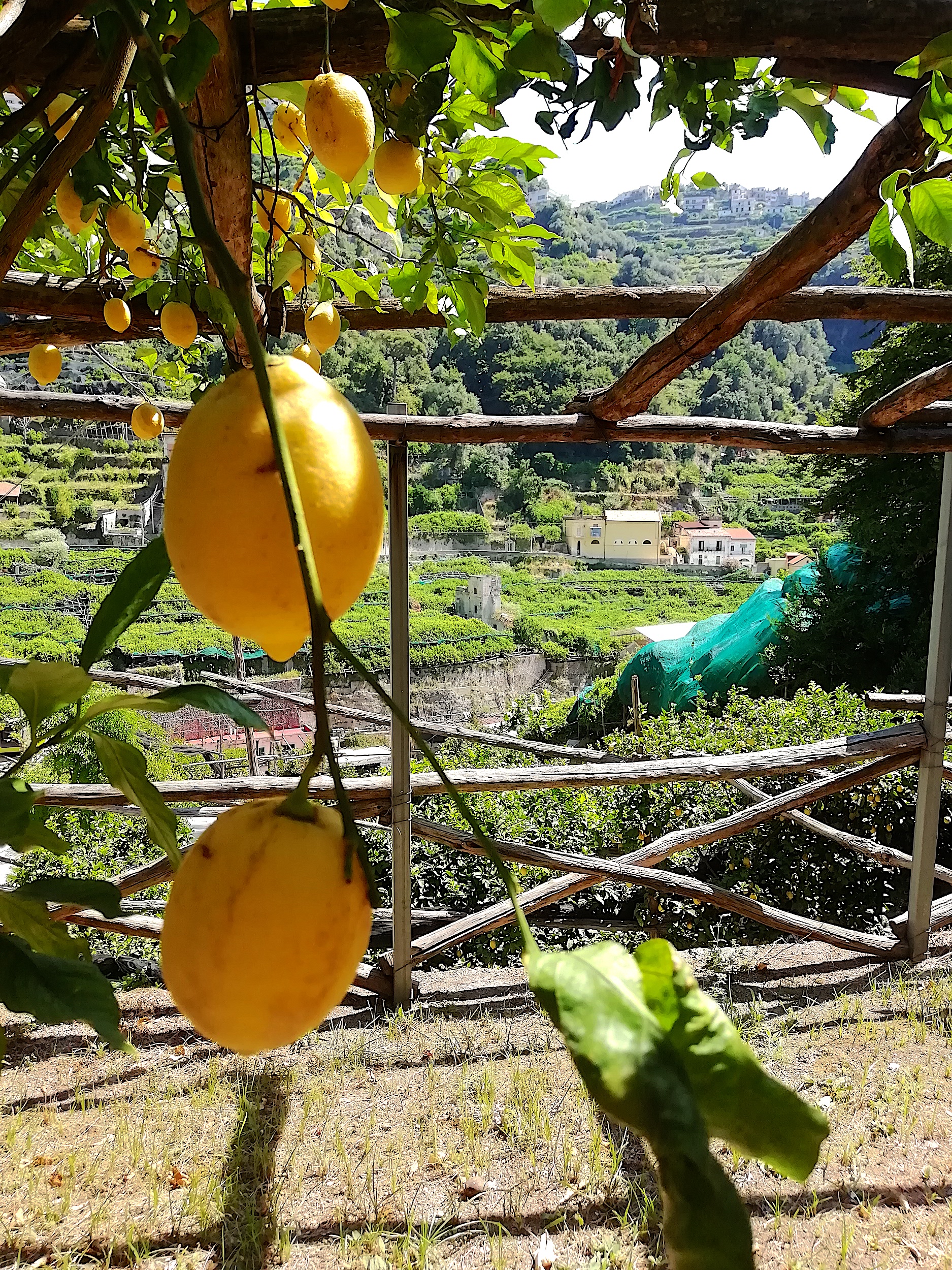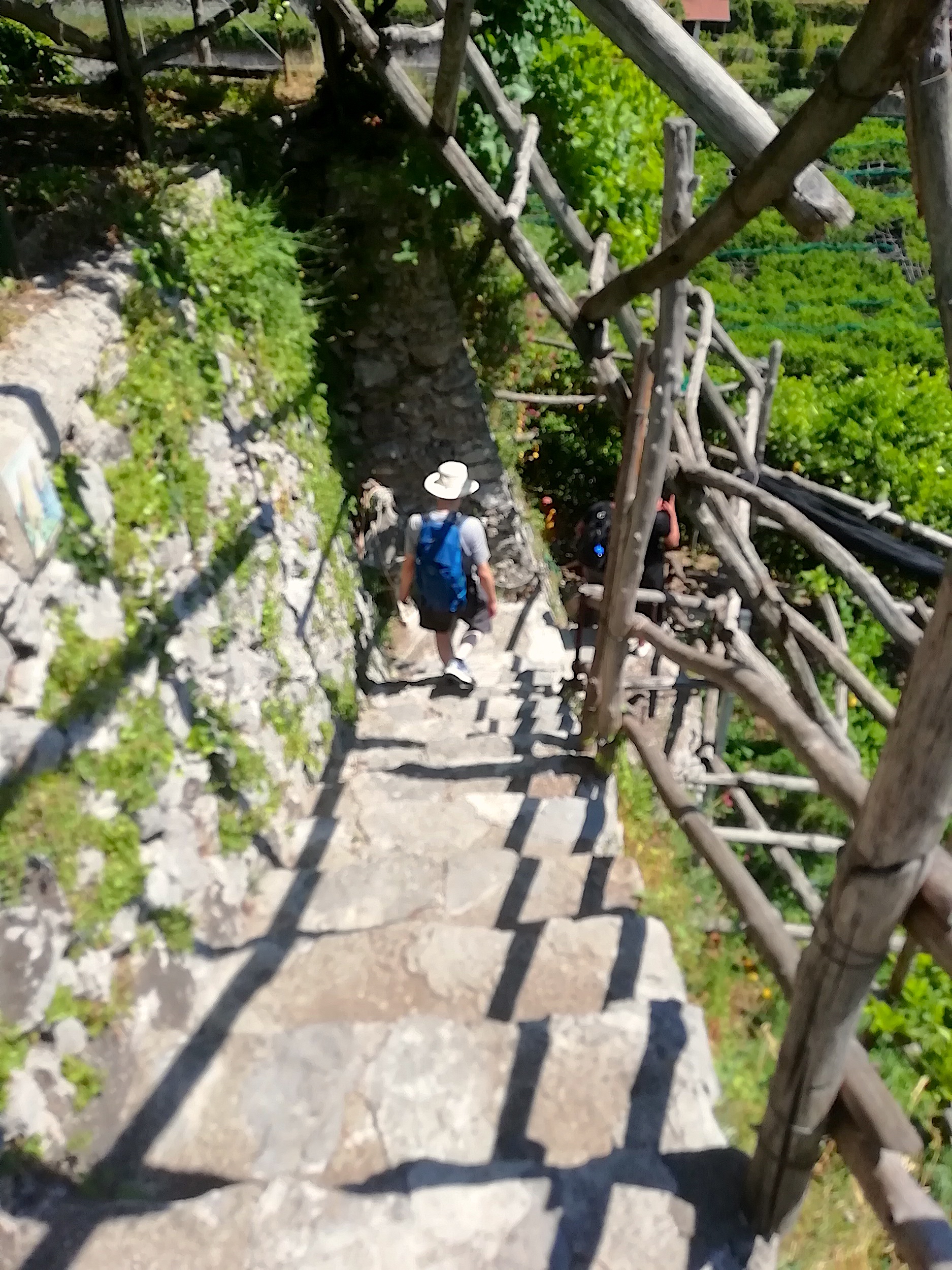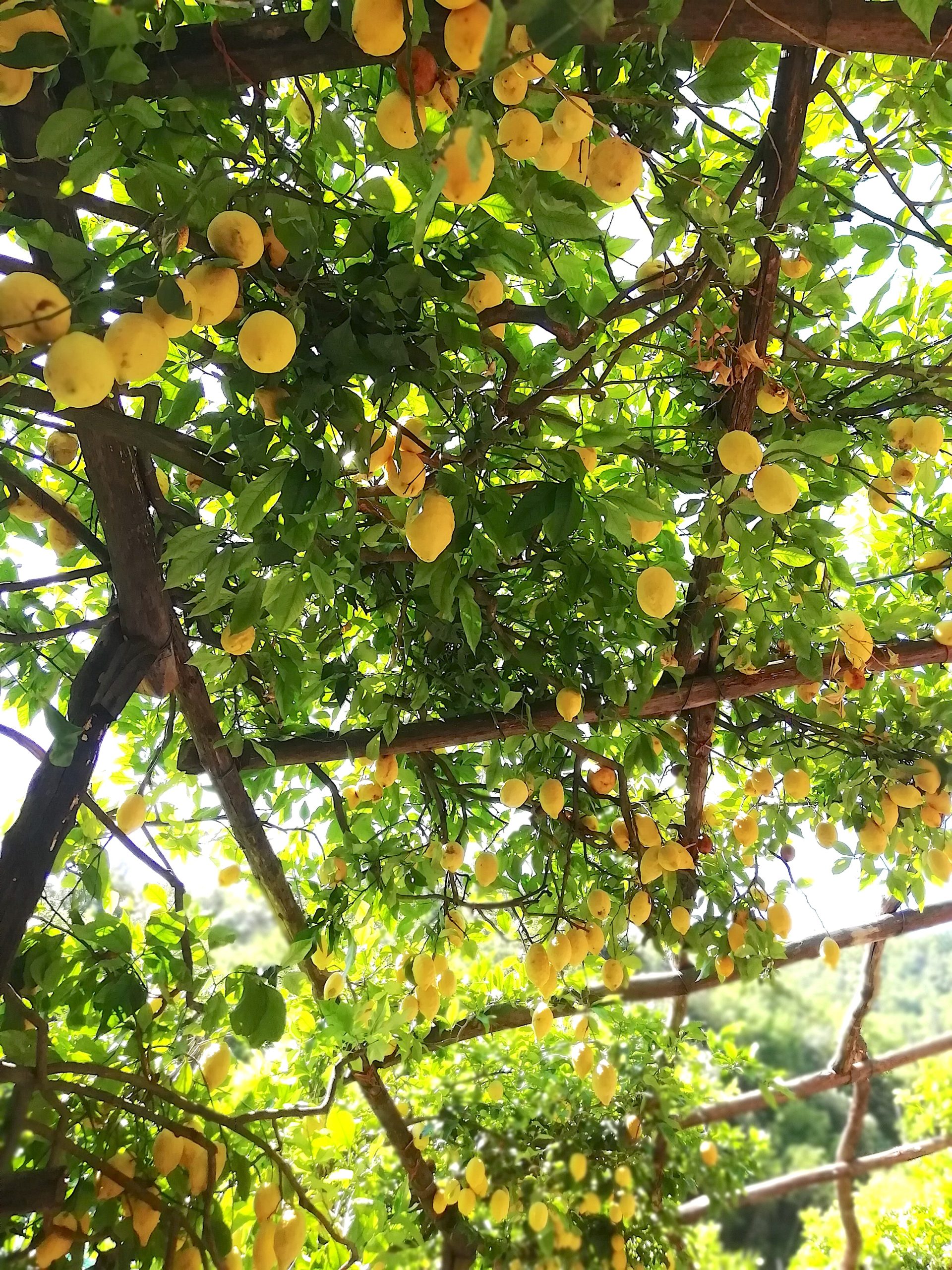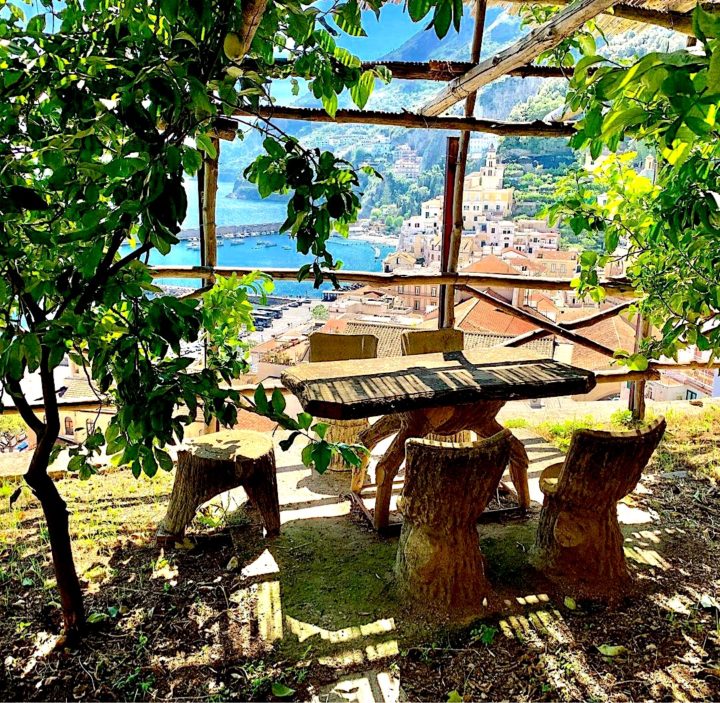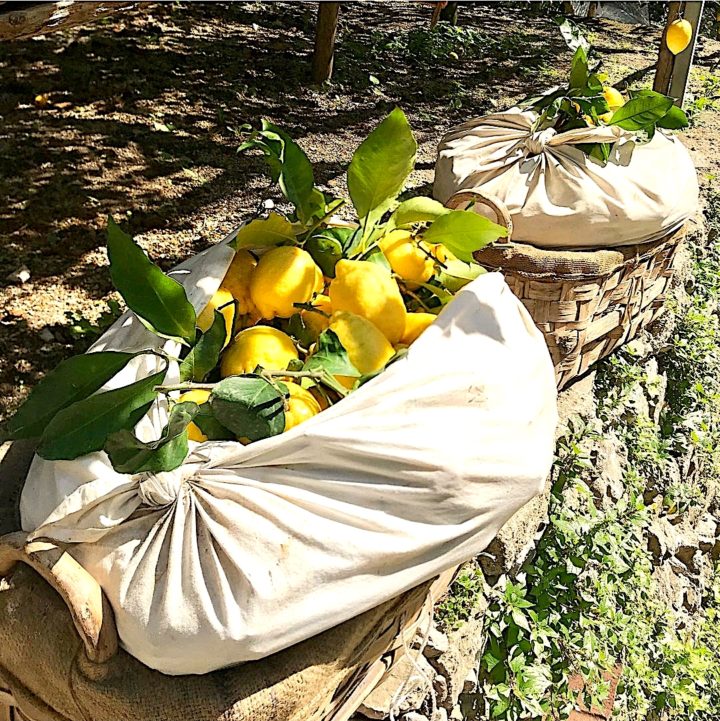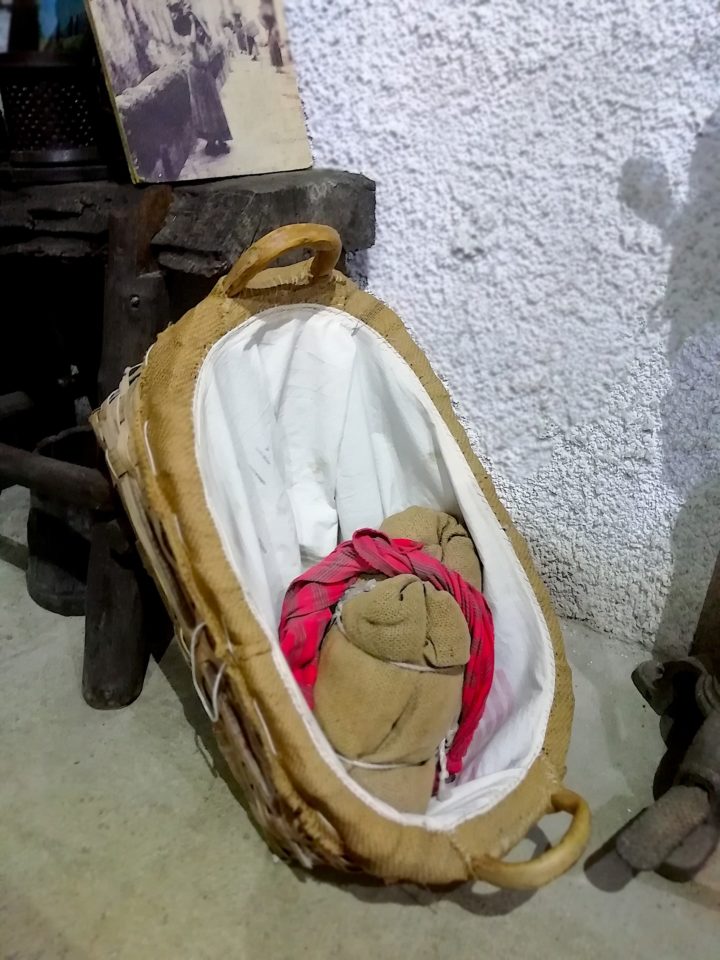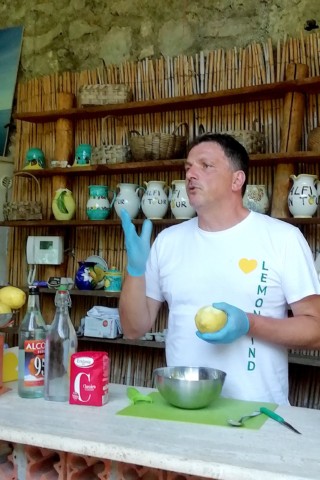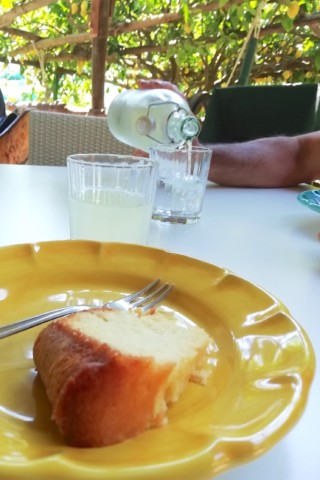Amalfi Lemon with Farmer Salvatore Aceto
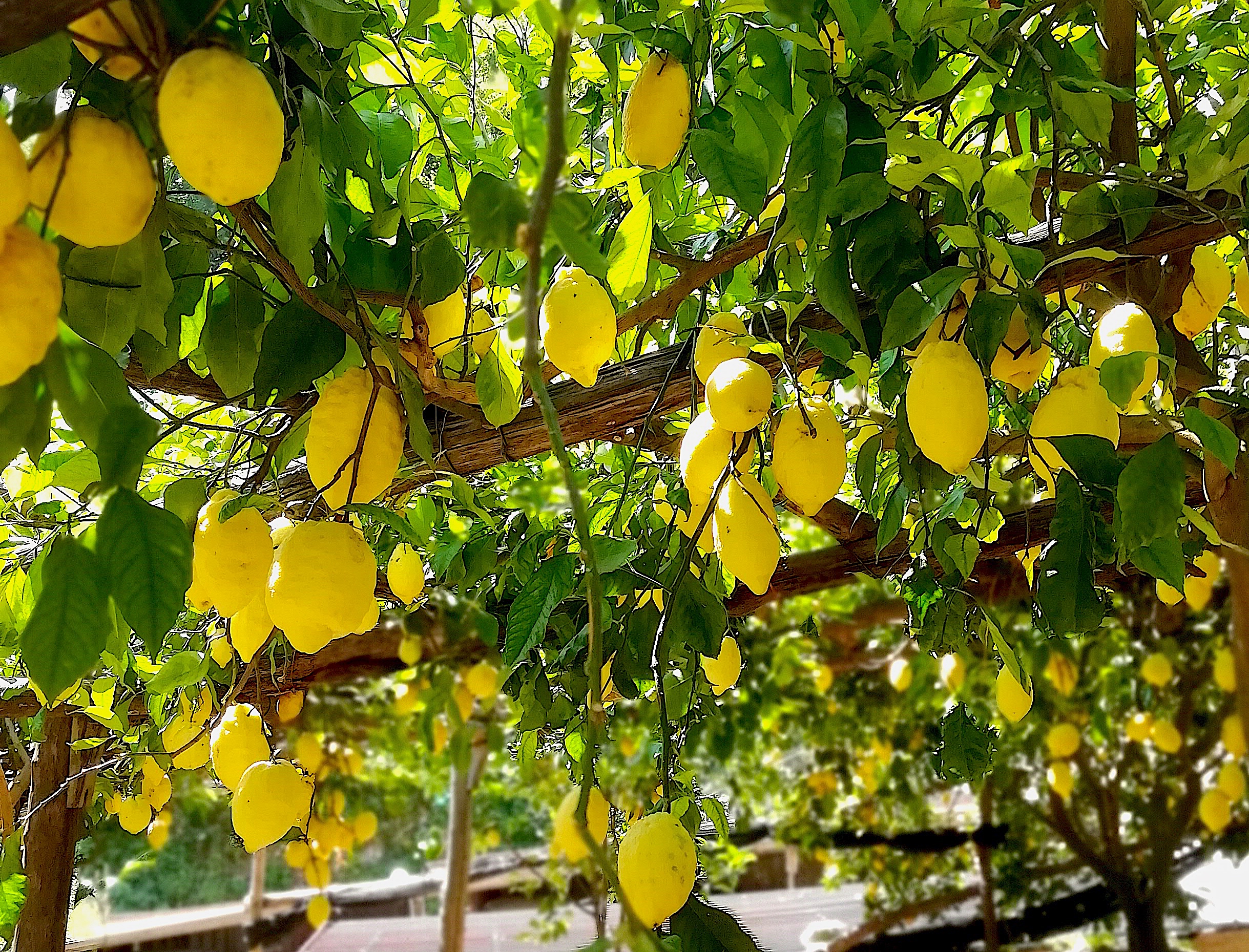
I sat nestled among more lemon trees than I had ever seen, way up high in the Valle dei Mulini. I could see the breathtaking terrain; the fertile green terraces characteristic of the Amalfi Coast and all the centuries-old farm houses, muted and earthy colored —straight down to the bright blue Tyrrhenian sea. All the while, I kept on thinking there’s no better place to discover the celebrated “Amalfi Lemon“ or “Sfusato Amalfitano” than precisely where I was —in the heart of the Amalfi hills immersed in the glorious gold and green of the lemon groves on the family farm of Salvatore Aceto, a sixth generation lemon farmer.
In the distance, I heard a waterfall and listened to its music. It was so hard to believe that I was only a short distance (about 950 meters) from Amalfi’s bustling city center. The crisp, clean country air was beautifully perfumed with refreshing greenery, strong notes of lemon, warm woods, and the salty Tyrrhenian sea. I was happy to be there.
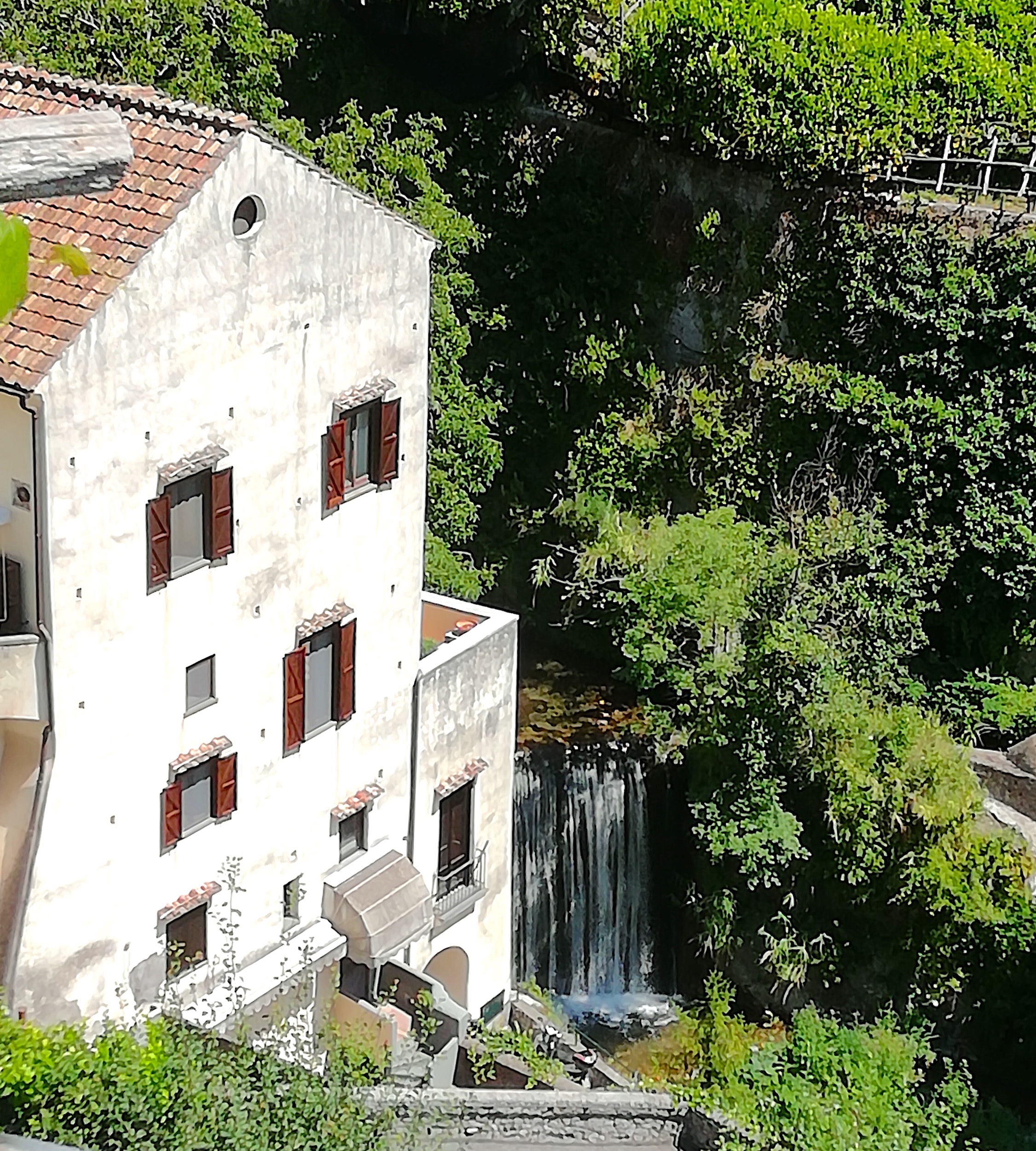
The Amalfi Lemon Experience was established in 2013, shortly after Salvatore left his job in an accounting firm and began to dedicate his time to the management of the family lemon farming business, left to him by his father Luigi. Due to Salvetore’s unwavering determination he realized a long-held dream of bringing his families cultural and natural heritage within reach for all to experience.
At the Aceto’s Amalfi lemon farm, curious travelers are introduced to this precious golden fruit; bright, sunny taste to scent—up close, and right from the source. Salvatore proudly takes his visitors for an in-depth tour of the farm, stopping at various lemon groves along the way, where he shares intriguing stories of the centuries-old tradition of lemon cultivation on the Amalfi Coast. It’s an immensely pleasurable, informative experience, and a great opportunity to admire the beauty of nature, and the profound effect it has on the senses, from a farmer’s view way up high in the hills of Amalfi.
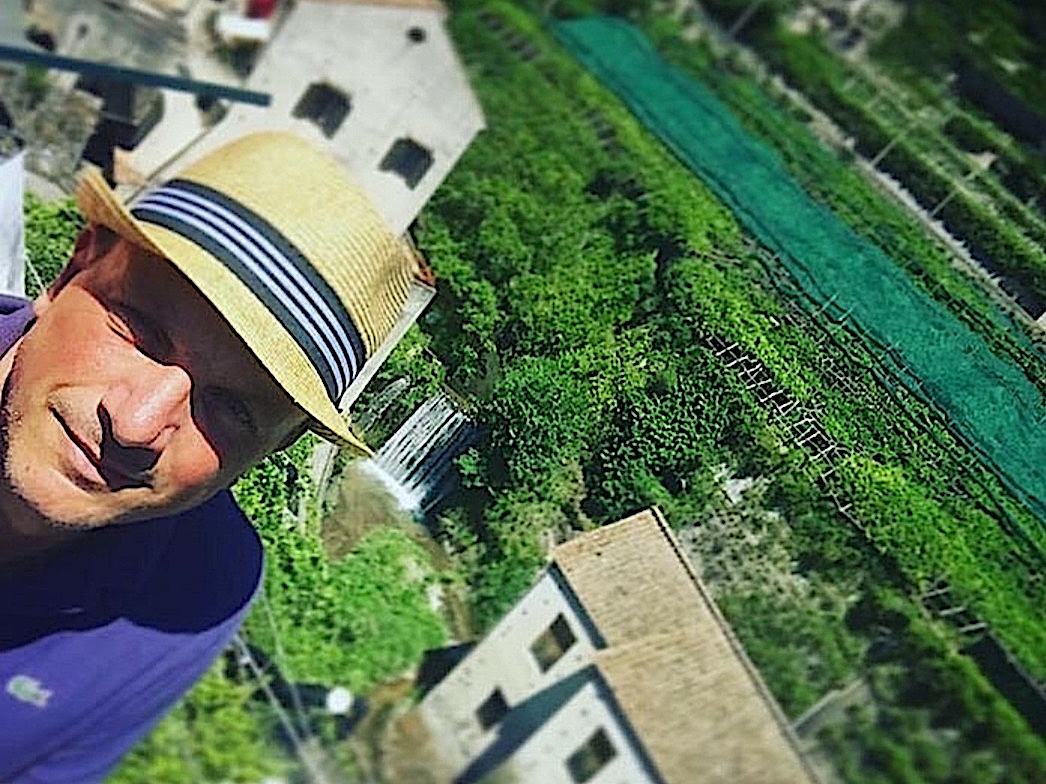
A Bit of History …
The history of lemons on the Amalfi Coast dates back over a thousand years (900 AD), when trade with the Middle East first introduced the fruit to the village of Amalfi, one of the leading maritime centers of commerce at the time. Amalfi’s merchants were notoriously savvy, but no doubt they could have ever imagined the immensely positive impact the acquisition of these lemons would have on the local agriculture, economy, landscape and gastronomy for centuries to come.
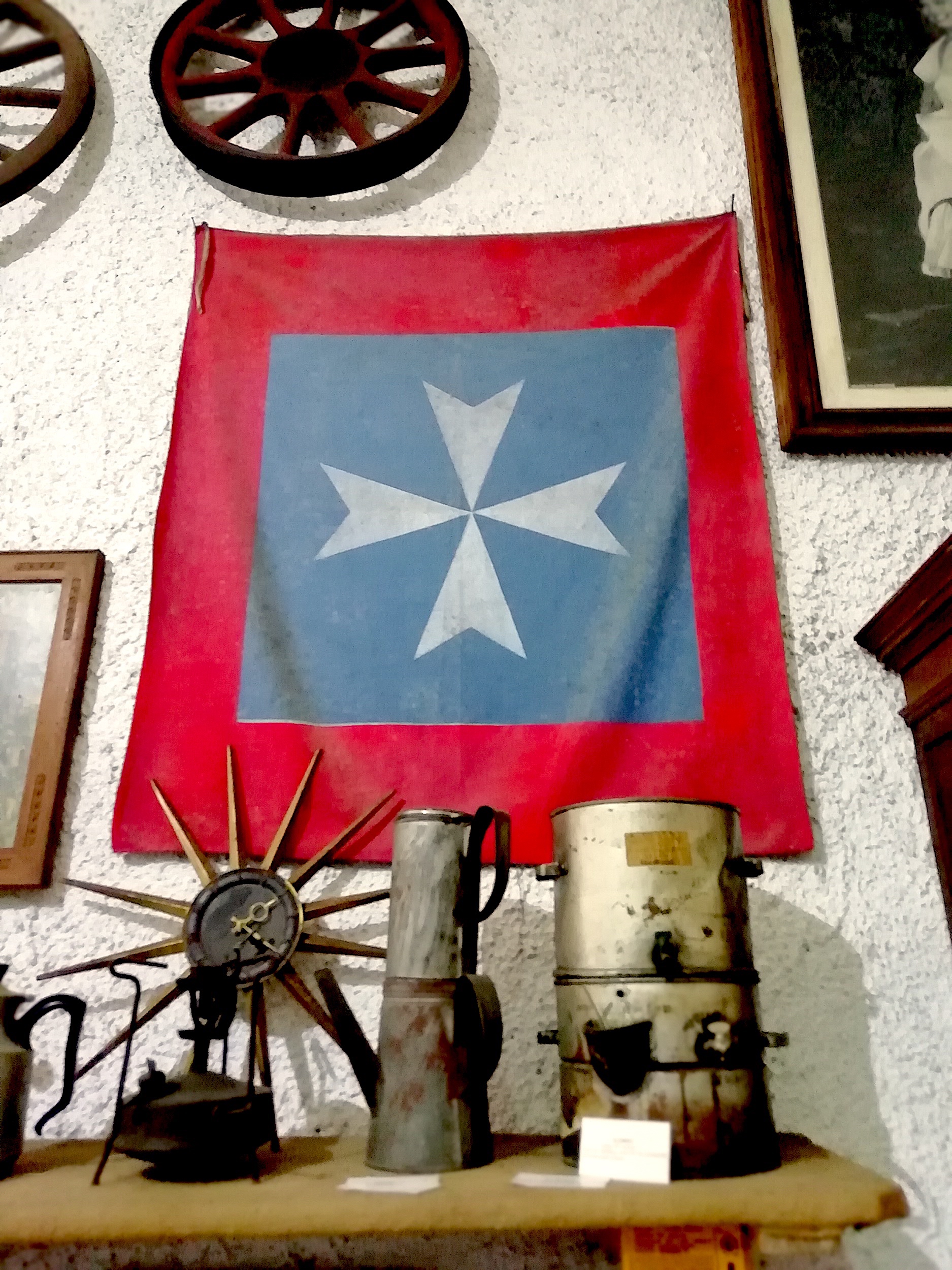
Maritime Republic of Amalfi, historical flag @Amalfi Lemon Experience
The first lemons were novel, but small with little juice. Over the years the local farming families were hard at work with intense cultivation of the lemons on the Amalfi Coast. Along the way, they began to graft the lemon trees with local bitter orange trees and, with the help of the natural Mediterranean environment, were able to cultivate a far superior fruit; from skin to flesh—known today as the “Amalfi Lemon.” The Republic of Amalfi’s merchant ships were always stocked with this glorious golden fruit; trading them all over the Mediterranean and the Italian peninsula. Between the 15th and 18th centuries the demand for the lemons had a significant increase due to the discovery of citrus fruit intake as an effective remedy to prevent and treat scurvy. The horrible disease often suffered by the sailors of the time on long sea voyages caused by a vitamin C deficiency —which is an essential vitamin in which lemons are an excellent source.
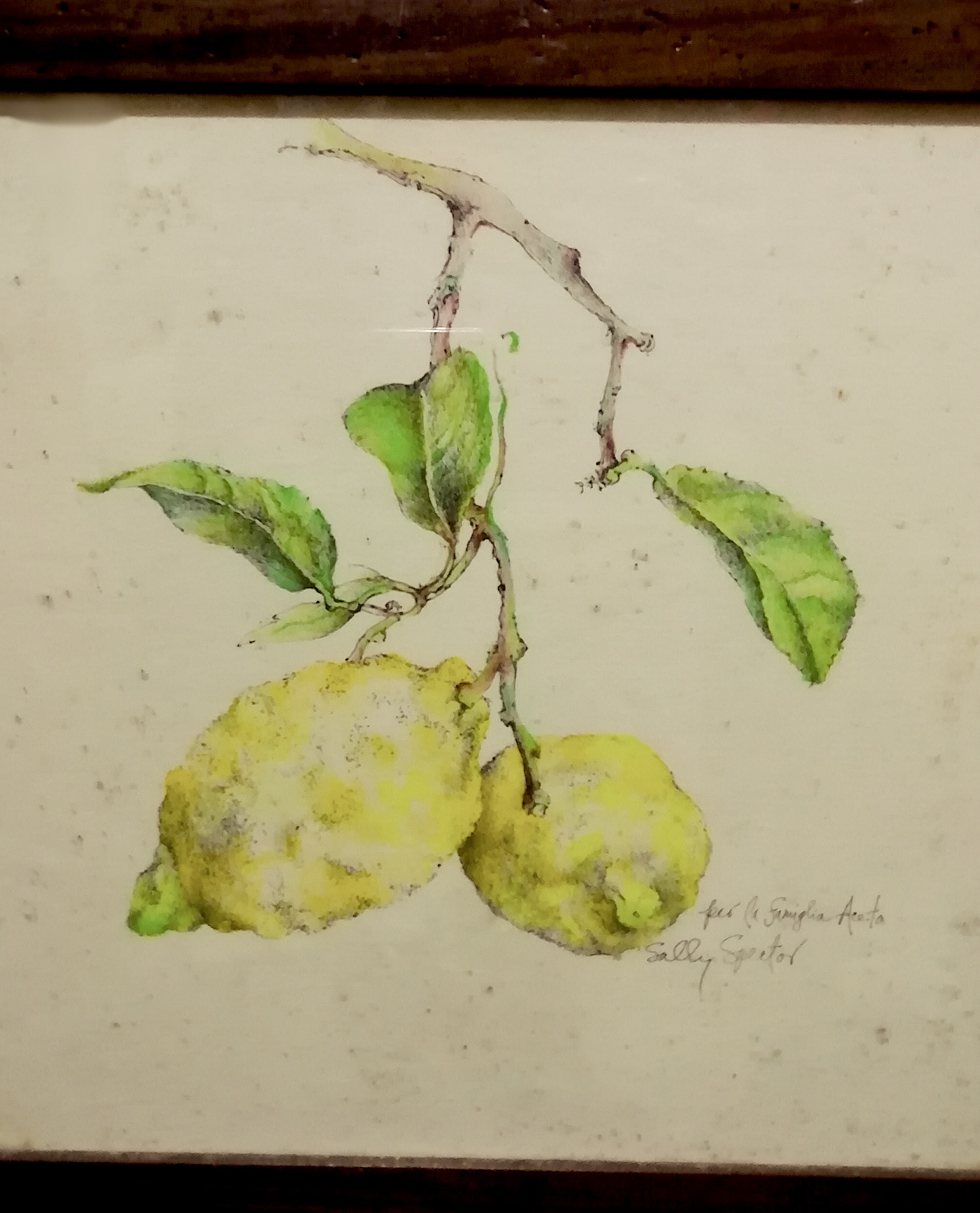
Simultaneously, throughout the centuries the motivation to supply the ‘sought-after’ export, triggered a profound transformation of the landscape on the Amalfi Coast. Rugged mountain terrain was integrated with farming systems and changed into an agricultural landscape cultivated with lemons on terraced steep slopes supported by dry stone walls, descending from the highlands down to the sea.
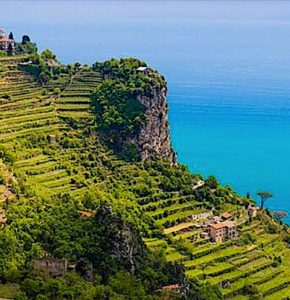
Terraced Slopes on the Amalfi Coast
The construction of these ‘lemon groves’ required long up hill climbs and arduous work to make them viable for agriculture; from leveling the land physically and entirely with the use of hand tools, to hauling soil up steep terrain and creating the terraces, to building their protective walls, one stone at a time.
The heavy workload involved entire villages along the Amalfi Coast, mainly between Amalfi and Maiori. The men kept busy all day with the development and maintenance of the land, and cultivation of the lemons, while the women were responsible to transport heavy basketfuls of the lemons on their shoulders, weighing about 125 pounds each, from high up in the terraces all the way down the slopes—making several long trips daily.
- Antique Tools of the Lemon Trade @Amalfi Lemon Experience
- Traditional Lemon Basket @Amalfi Lemon Experience
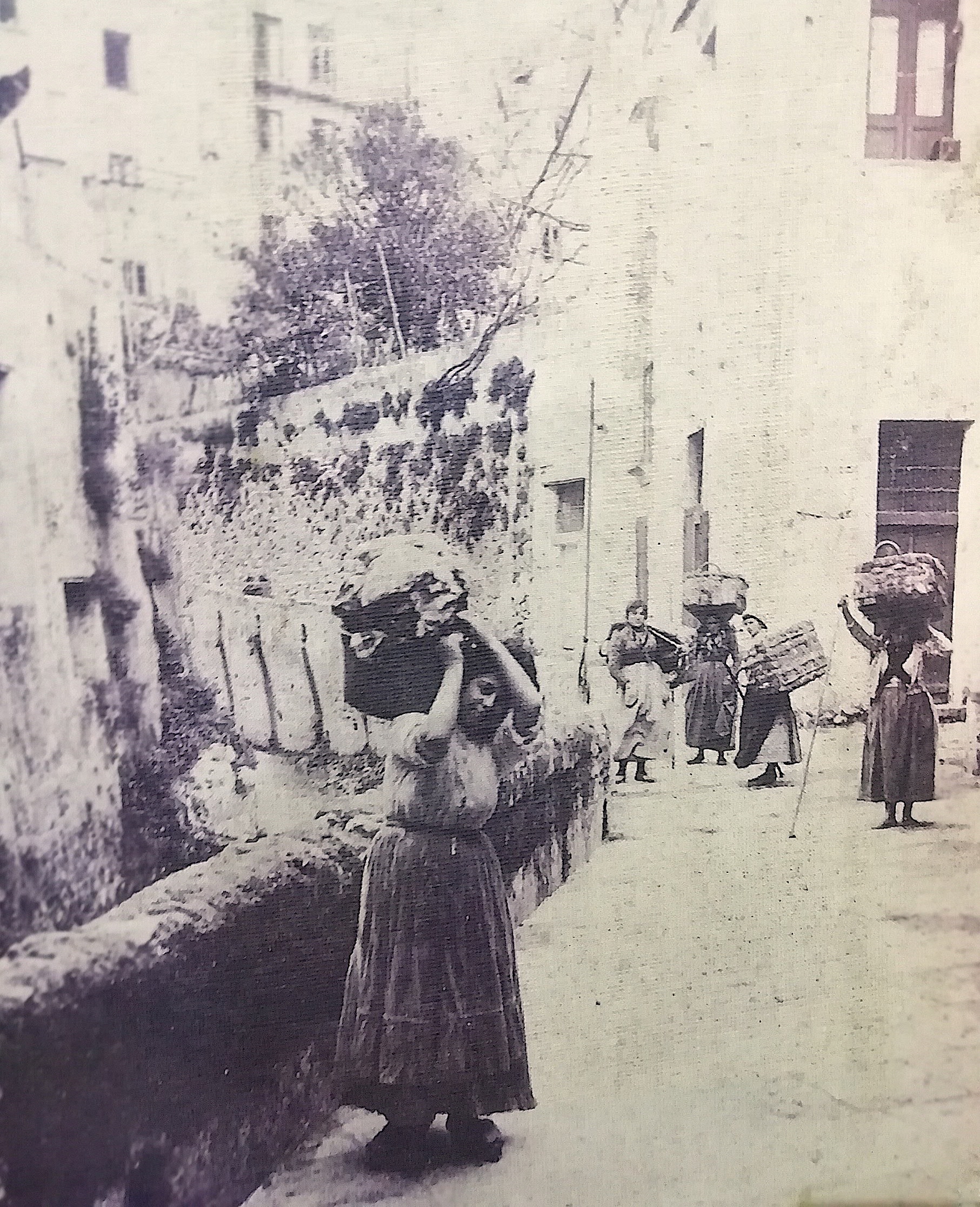
Amalfi Women Transporting Lemons, 1920 @AmalfiLemonExperience
The cultural and natural heritage of the territory, the soul of a centuries-long tradition, not only kept the economy strong, but produced one of the most spectacular landscapes in the entire world. As you can imagine, these extraordinary agricultural traditions are deeply rooted within the culture and its identity, but opposed to times long ago, today the sustenance and preservation of these traditions, and the glory of the fruits of the labor, have been the result of the dedicated hard work of the mere few remaining citrus farming families on the Amalfi Coast.
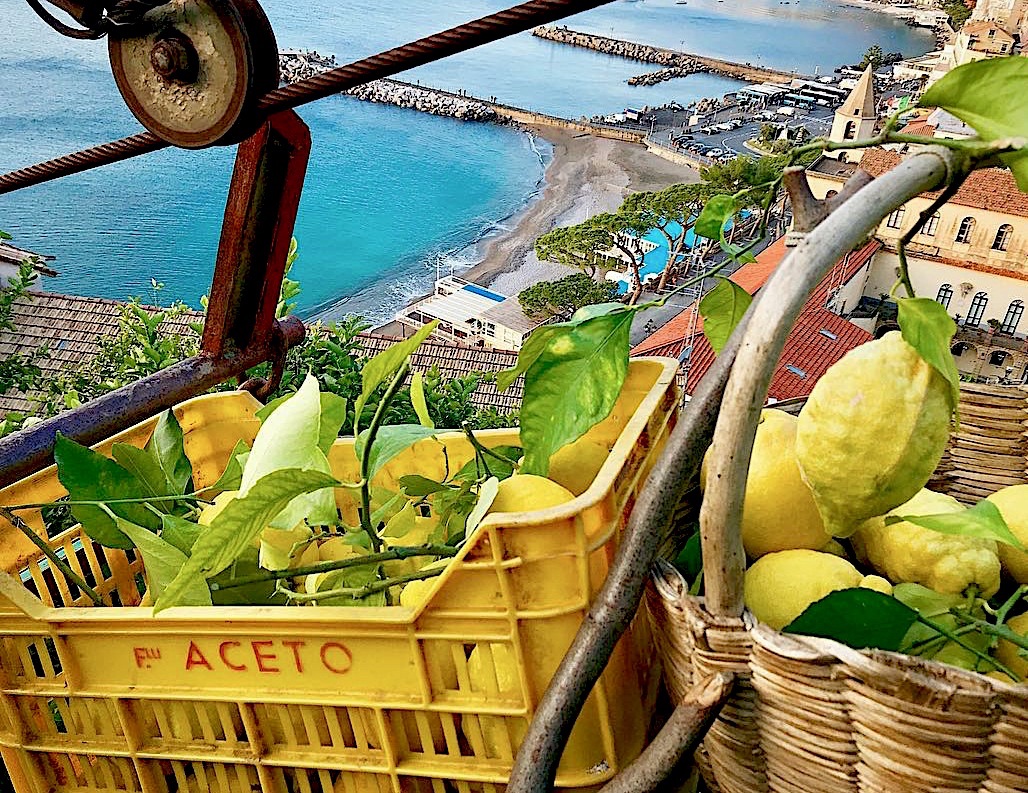
The Aceto family migrated to Italy from Europe’s north way back in 1835, when they decided to buy a small plot of land in Ravello and begin a new life as lemon farmers on the Amalfi Coast. Unbeknownst to them at the time, the purchase of this land would mark the humble beginning to a long-lasting and successful family business in the lemon trade. The challenges they faced through the years were met with strength and true resilience, and by the end of the second world war, over a century later, the Aceto family had established themselves as the largest producers of lemons on the Amalfi Coast.
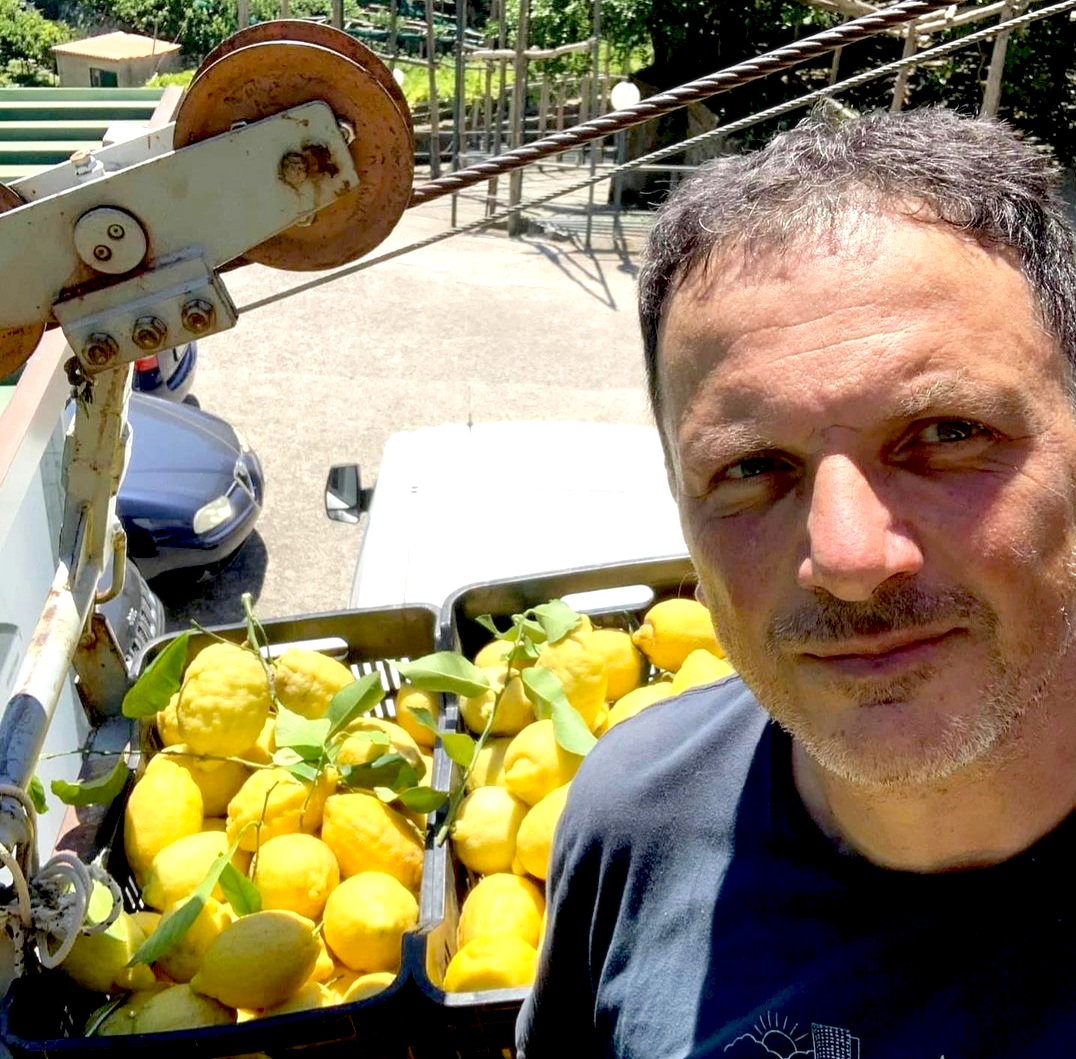
Their particular lemon, called Sfusato Amalfitano, derives its name from the Italian word “sfuso” meaning “spindle” due to its distinctive long and tapered shape. The variety is a medium-large size with thick, intensely-scented skin (especially rich in essential oils and terpenes), juicy, mildly-acidic flesh, and virtually no seeds. The sfusato lemon also contains a significantly higher vitamin C content than more common varieties. They are widely used in the local gastronomy; the juicy, flesh, the skin, and the leaves, from flavoring fish to making the world-renowned limoncello of the Amalfi Coast—which Salvatore demonstrates how to make, step by step, on the tour. The lemons are also commonly hollowed-out and used as decorative cups to fill with homemade lemon granita (crushed lemon ice), for special occasions. Or, as festive wine glasses, explains Salvatore, for casual gatherings up in the hills on those balmy summer days and nights, when a subtle touch of refreshing lemon brightens the reds divinely.
My first taste with Salvatore was a memorable one. He handed me a big wedge of the lemon and, with a huge smile on his face, told me to eat the whole thing, skin and all. It had a brilliant, sunny flavor, and a perfect tartness. I gobbled every bit down, and quite literally, could have eaten the entire fruit. But this would be expected on the Aceto’s farm, where the lemons are cultivated sustainably with traditional farming methods and following the ICEA Certified Organic Agriculture guidelines.
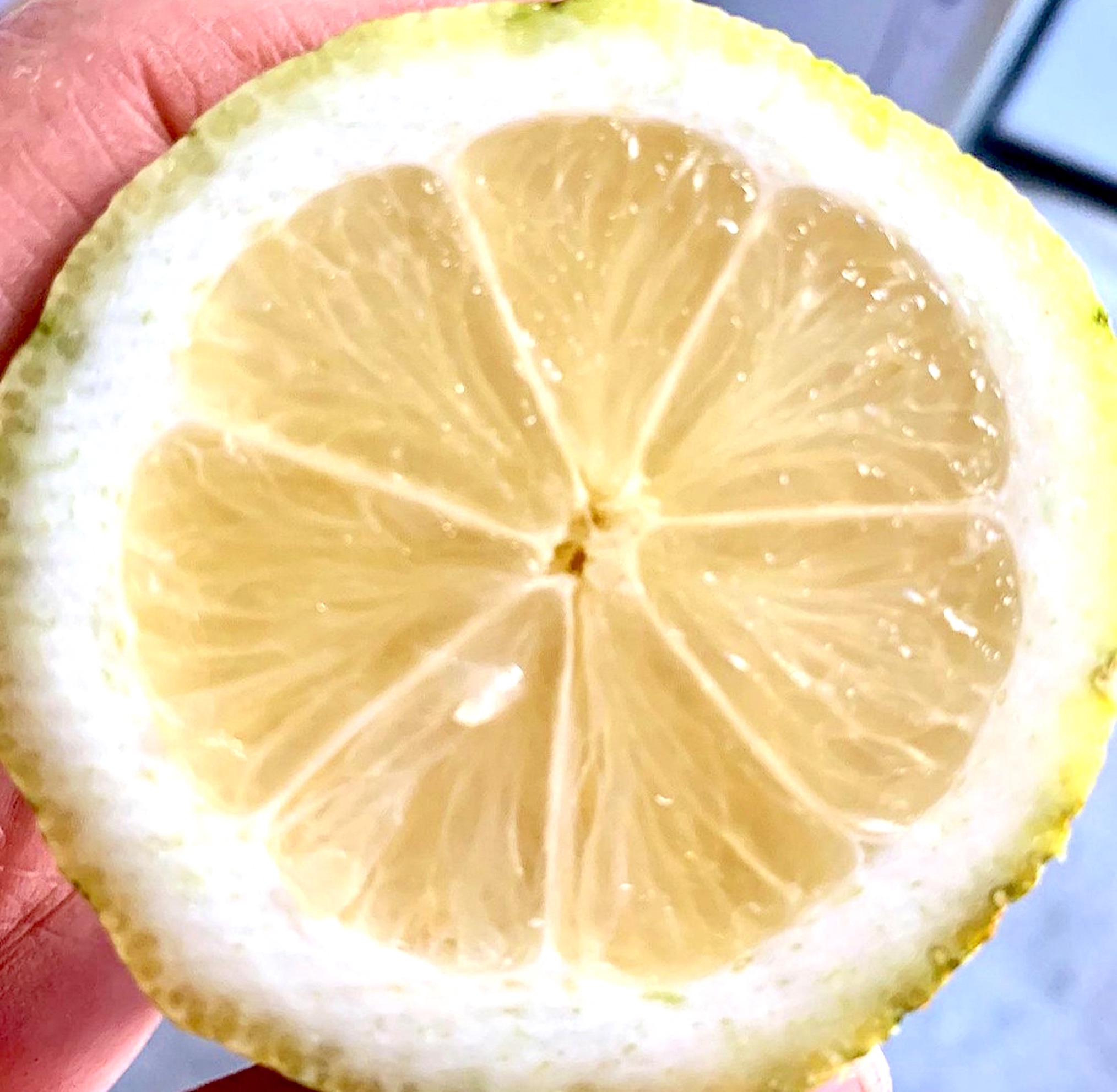
On the Aceto’s 12-acre farm, with more than 7.5-acres of agricultural land dedicated to the cultivation of lemons, including 2600-lemon trees, there’s hard work to be done; work that requires a whole raft of skills, generations of knowledge, and physical strength. The lemon trees, which blanket a wide stretch of terraces cascading down the mountainside, still today are only reachable by foot and long up hill climbs; 1300 stone steps to the top terrace. The lemons are harvested between February and August, a busy-period that keeps Salvatore and his 86-year-old father Luigi in extra fine shape, as the climbs up and down the mountain happen quite a few times a day. They do, however, have a sophisticated, electronic pulley-system, which they installed in 1968, that runs from the top and helps them transport the lemon-filled crates all the way down. The mere thought of the back-breaking work that was eliminated that year, and the extreme joy they must have felt, makes me want to celebrate, even today.
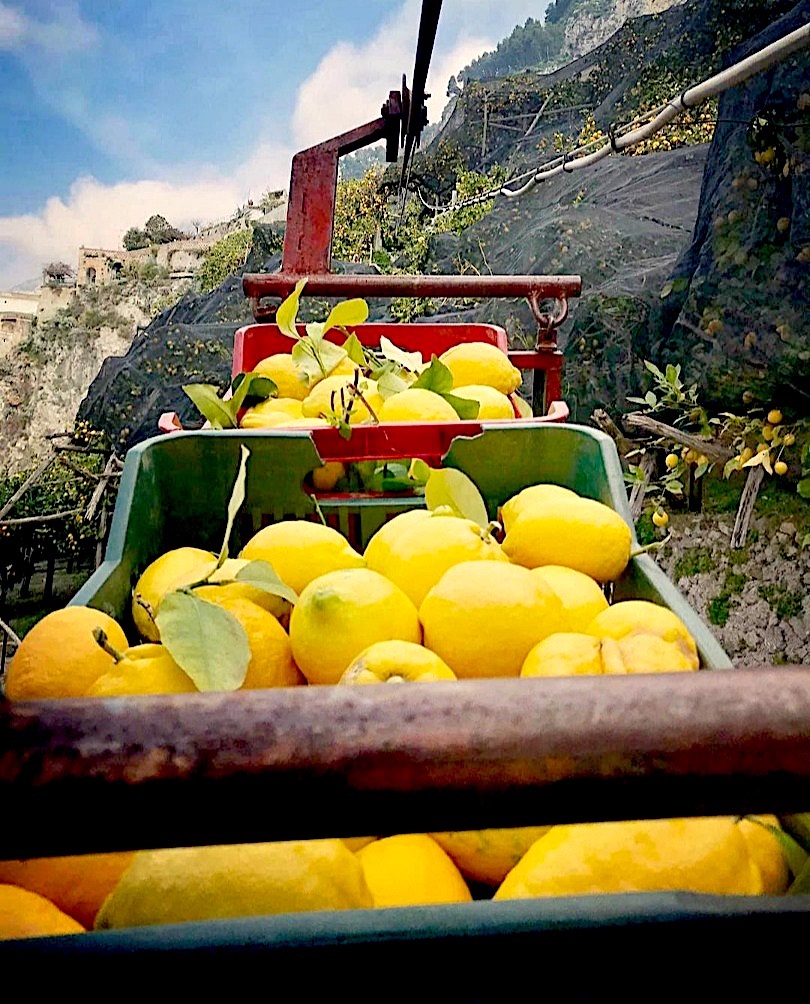
In autumn the lemons are covered with tarps supported by long, heavy chestnut poles to protect them from severe weather conditions in the winter months; ie. strong winds, heavy rain, sleet, etc. If the temperature should fall below zero, still blessedly a rare occasion, explains Salvatore, the lemons will die during the first 2 days; they freeze, then dry out. The centuries-old terraced slopes, which were constructed methodically to help to maintain the stability of the terrain, provide adequate drainage, and prevent erosion, require constant attention as climate change has brought more frequent torrential rainfall and increasingly strong winds. Work that Salvatore says, can be “pericolossisimo” (very dangerous), as he recalled recently waking up in the middle of the night during a storm to deal with an old stone wall that came crumbling down to the ground. The lemon trees, with their strong roots deeply penetrated into the terraced slopes (some for over 450 years), help to prevent landslides, which pose an increasingly severe threat to the coastal communities below.
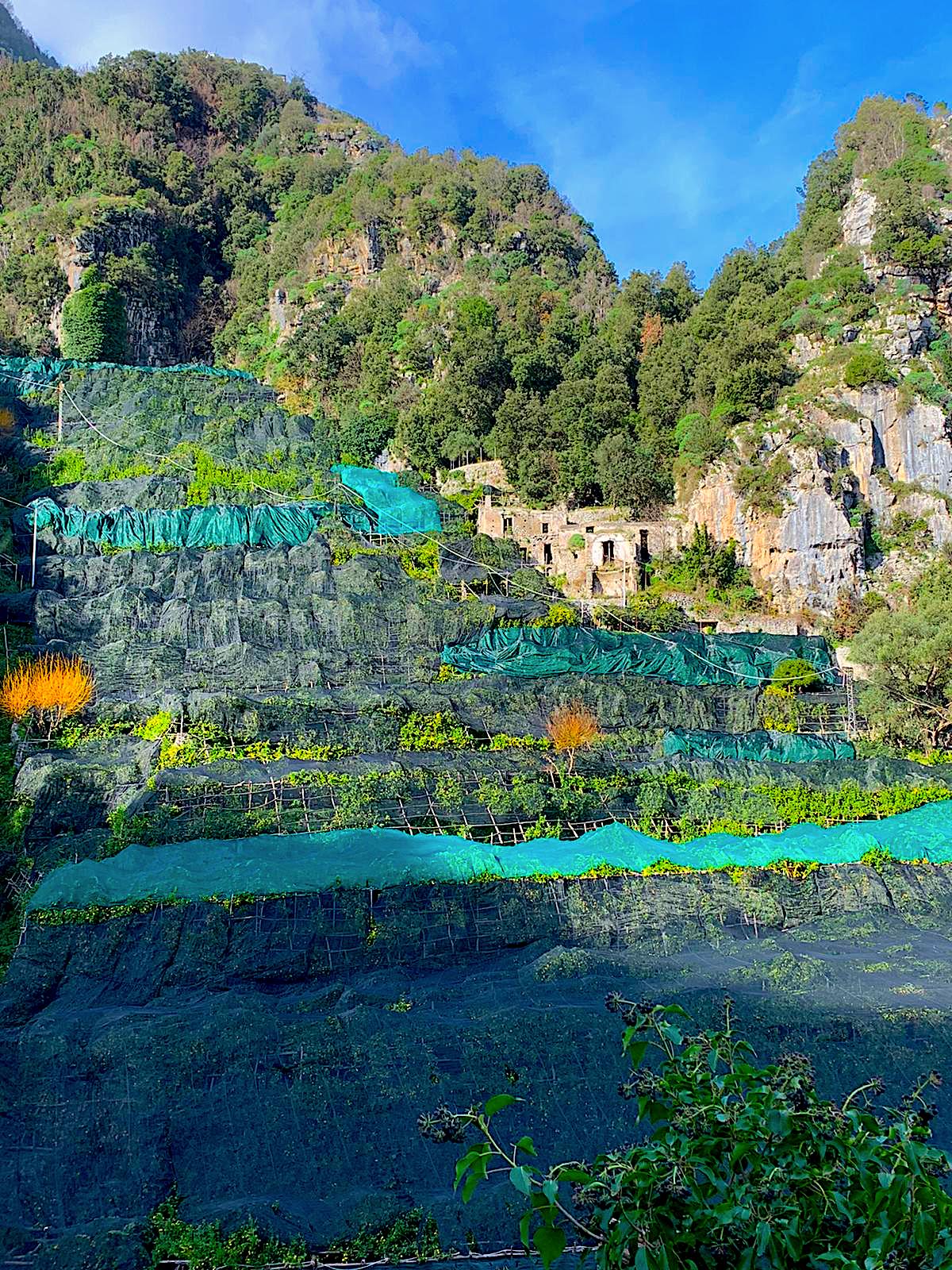
Sadly this is the kind of work that not many people can or want to do these days, for various reasons, but mainly due to the high cost of maintenance, competition from cheaper imports, and labour-intensive work on the slopes. Reasons, including low wages, that have also led a growing number of the younger generation to leave the farms and pursue careers in other industries, such as tourism on the Amalfi Coast. Hence, lemon groves run by families for generations are being abandoned, and with that there is a growing concern for the future of lemon cultivation on the Amalfi Coast —and the dangerous effect of the neglect of the terraces and their supportive stone walls, which could all come tumbling down.
Not surprisingly, the “World of Lemon Cultivation” on the Amalfi Coast has been defined as “Agricoltura Eroica” (Heroic Agriculture) in Italy. From the dedication and hard work, to the sustenance and preservation of a centuries long tradition; the cultural and natural heritage of the territory, to the glory of the fruits of their labor, to bravely helping to protect all that lies below their lands from potential natural disasters—I too have the deepest-respect for these few remaining lemon farming families – The Aceto Family, and consider them, True Heroes of the Amalfi Coast.
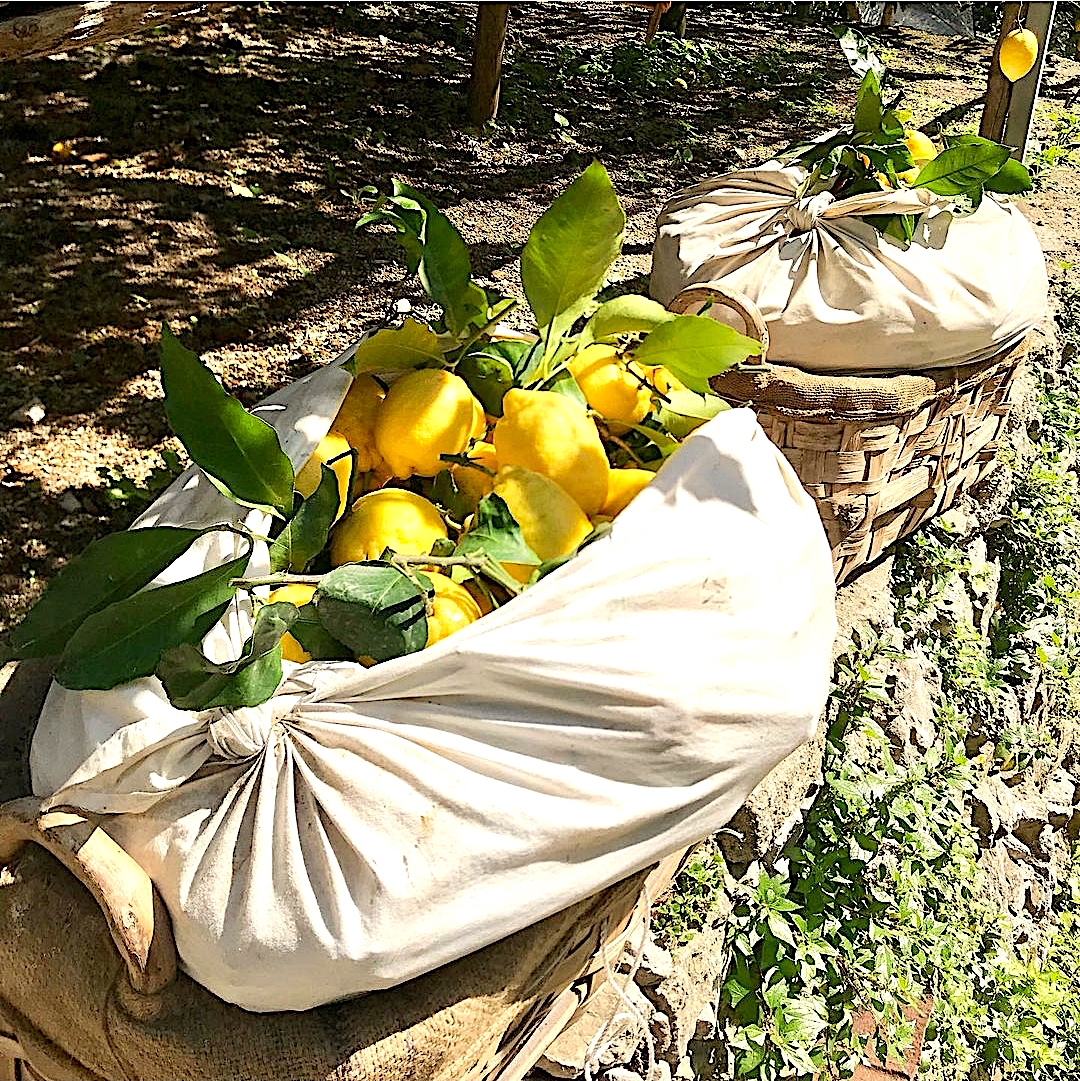
≈
A worthwhile visit that will delight your senses and forever leave a mark on your memory of the spectacular Amalfi Coast….
≈
Amalfi Lemon Experience
Salvatore runs his tours twice a day, at 10 am and 4 pm, and they last 2 hrs. He picks you up in the main square in front of the Duomo di Amalfi in a festive, bright yellow golf cart that you can’t miss, nor should. It’s a wonderfully enriching experience, sure to be enjoyed!

Address: Via delle Cartiere, 84011 Amalfi SA
Tel: 335 121 8292
For information about the lemon tours, as well as cooking lessons, and private events –

